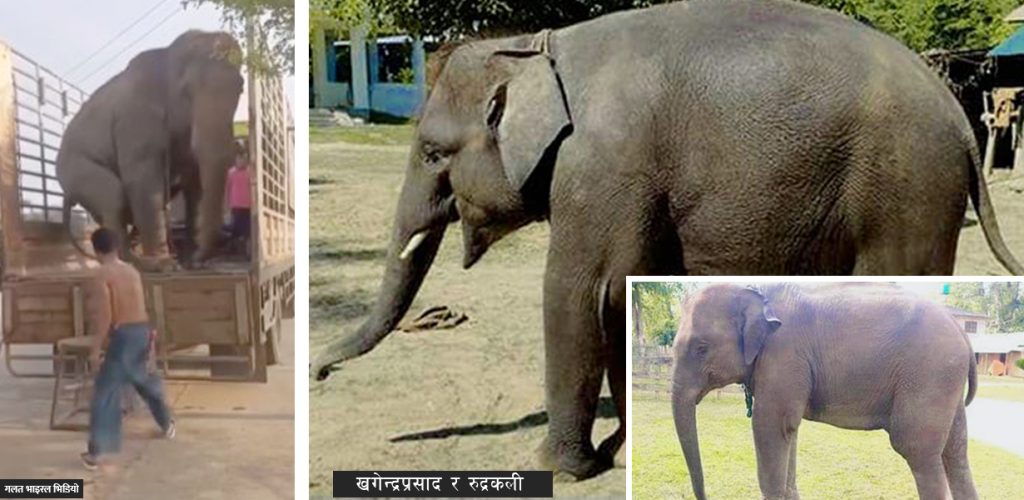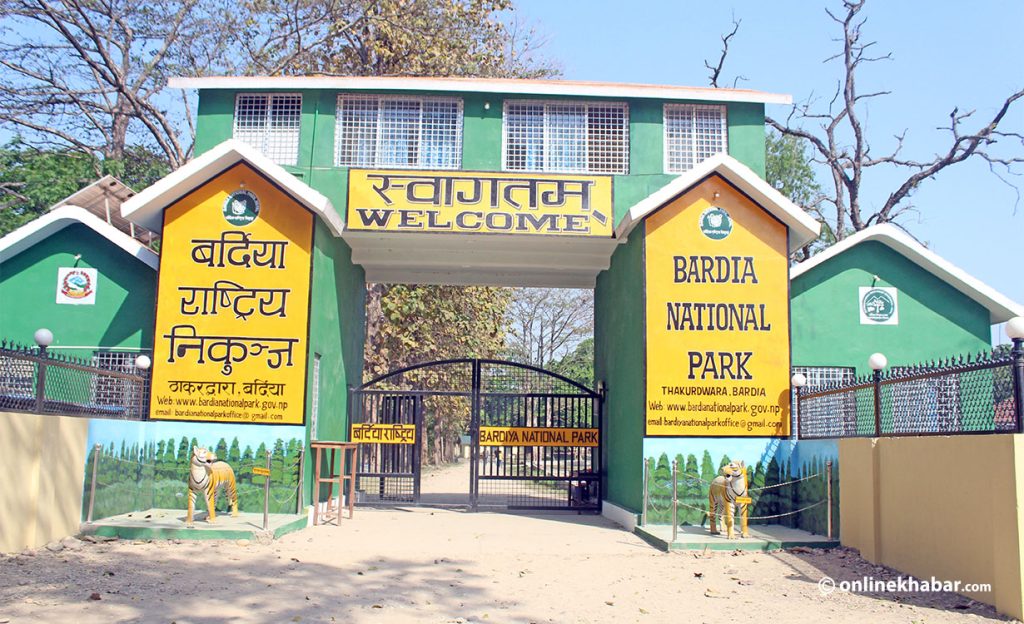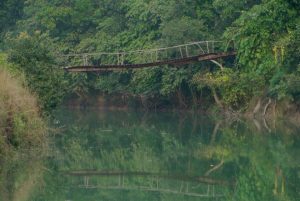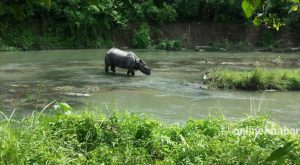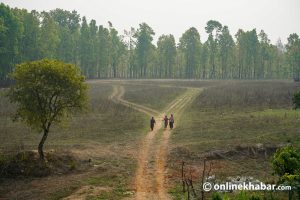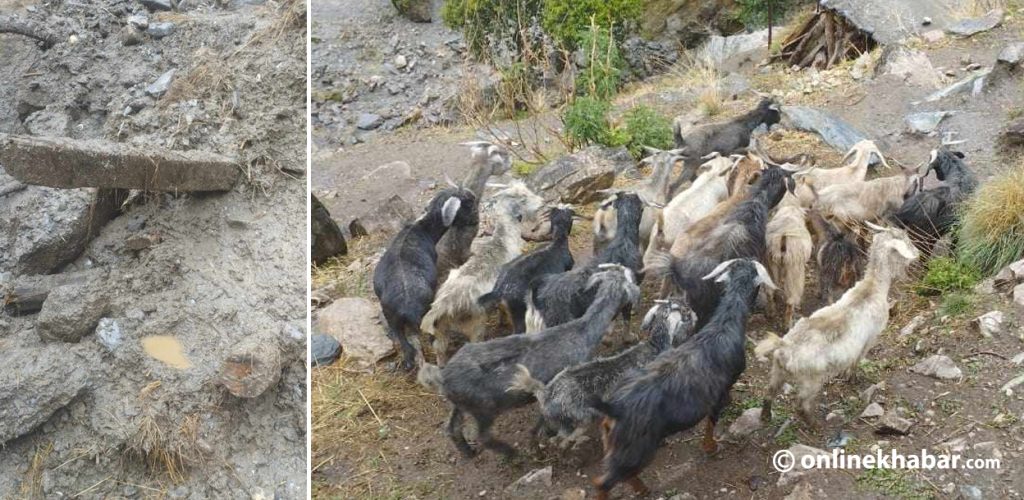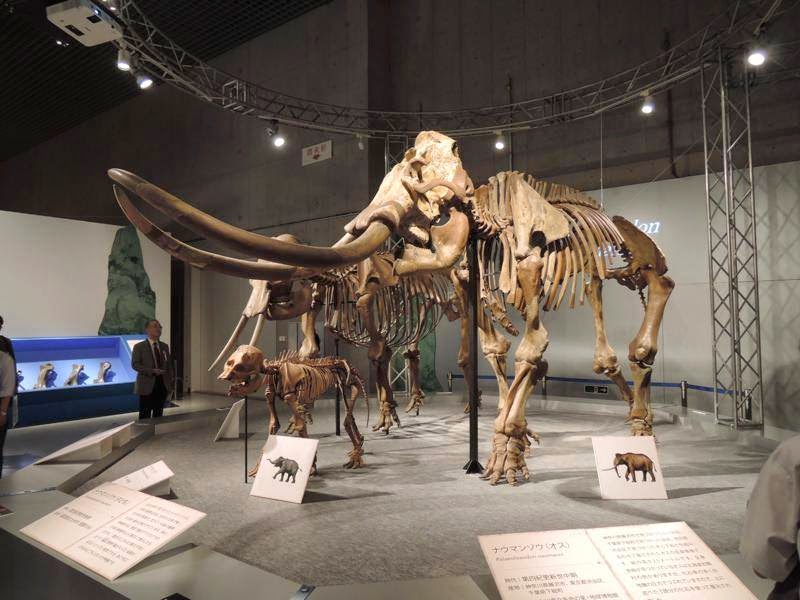
It took 400 million years for Earth to evolve. The epic journey was tough, grueling and harrowing for both humans and the denizens of the wild. The biggest challenge for the animal kingdom has, however, been the hominoids—the ‘thinking ape’ as they are sometimes referred to.
If the evolutionary history of the early primates is to be dug up, the earliest known ancestors of modern-day elephants came 65 million years ago, long before the birth of Homo sapiens in the Paleolithic Stone Age, 2.5 million years ago. The humans came, and the ‘rape’ began. Untold species and numbers of our pre-historic elephants, the rightful early settlers of this planet, were pushed to extinction.
My first encounter with wild elephants took place at Sainabar in the Bardia Forest, far-west Nepal. I ran into a herd of 12/13 wild elephants foraging in the woods right next to the road on the Mahendra Highway. I was on my way back to Thakurdwara after a day’s fishing at the Babai River.

As elephants are rarely seen in the wild, I was very excited at the prospect of taking some photos at such close quarters. I stopped my motorbike some 20 yards from the herd. But no sooner had I trained the camera on the herd when my guide Sitaram Choudhary, riding pillion, panicked.
I lost my balance, and we nearly toppled over. “Sir, we better not stop here . . . it’s not safe. They can attack anytime, and if they do, we don’t stand the slimmest chance,” he blurted into my ears. I somehow managed a few hurried shots.
As I kicked my motorbike into life, the herd saw us dawdling on the roadside. I saw some commotion amidst the group. Suddenly, one of the elephants, its ears pinned back, turned sharply towards us and charged. As we sped off, I turned back to look. The rushing primate had stopped after a few paces but kept eyeing us suspiciously.
Back at the lodge in Thakurdwara, my guide Sitaram unabashedly admitted that he was all set to abandon me and dash for the nearest woods—the only safe thing to do when being chased by a wild elephant, he said—had I dilly-dallied a little longer. For me, born and bred in the city, the revelation that elephants in the wild could be so dangerous came as a total shock.

Status: endangered
In 1986, IUCN (International Union for Conservation of Nature) declared the Asian elephant as endangered and listed it on the IUCN Red List. Over the last three generations, the population of Asiatic elephants has declined by at least 50 per cent. And the outcome can be past hope in another 60 years. This legendary mammal may vanish from the ‘third planet from the Sun,’ the Mother Earth.
Violent
Elephants can be unpredictable. Even captive elephants, which appear very gentle to people, can deceptively turn violent and even turn upon viciously on humans. Untold incidents of unsuspecting people being killed or maimed by domesticated elephants in India and Nepal make the headlines once in a while.
On the other hand, wild elephants are thoroughly aggressive and are notorious for attacking humans on sight. It’s no secret that in defence, the matriarch African wild elephant can turn into a formidable adversary and fear none—not even the lord of the jungle. They are known to charge into a den of lions when it comes to defending their calves.

Human-Elephant Conflict
Every year, the havoc wrought by wild elephants in Nepal make the headlines on the tabloid press. “Tuskers kill five in east Nepal”, “Wild elephants create havoc in Dang”, “Two trampled to death in Jhapa”, “Crops destroyed in Bardia” make news stories that are depressing and sad to read. But it is a brutal fact that every year during harvest time of corn and paddy, wild elephants in the east or west on the Nepal plains (Terai) go on the rampage.
People lose their hard-earned crops, livestock, property, and at times, even their lives. For both, the humans and the elephants, it’s a harrowing experience.
The reason for these sporadic outbreaks of savagery by wild elephants is, however, not far to seek. In truth, they have been deprived of their natural habitat and driven out of their homes. And the violence has stemmed from the long-drawn-out injustice meted out to them.
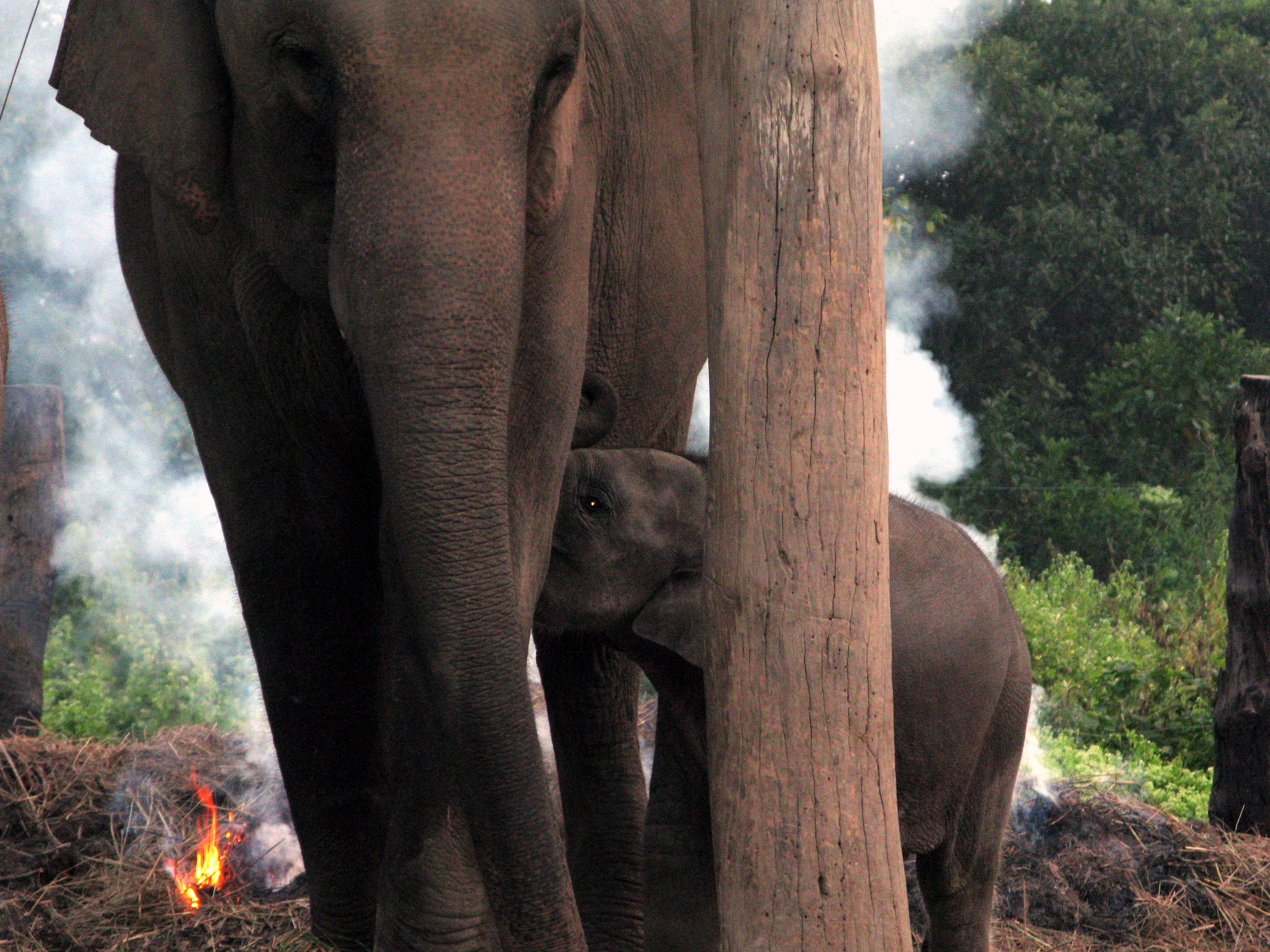
The tuskers, who once freely roamed the abundant Terai forest, have had their habitat encroached upon, fragmented and destroyed by humans. Farmers have arbitrarily laid claim to what was once their home turf.
While it took eons for the pristine forests to take shape, human greed for more land led to massive destruction of these jungles, forcing wild elephants now to trespass on human habitation.
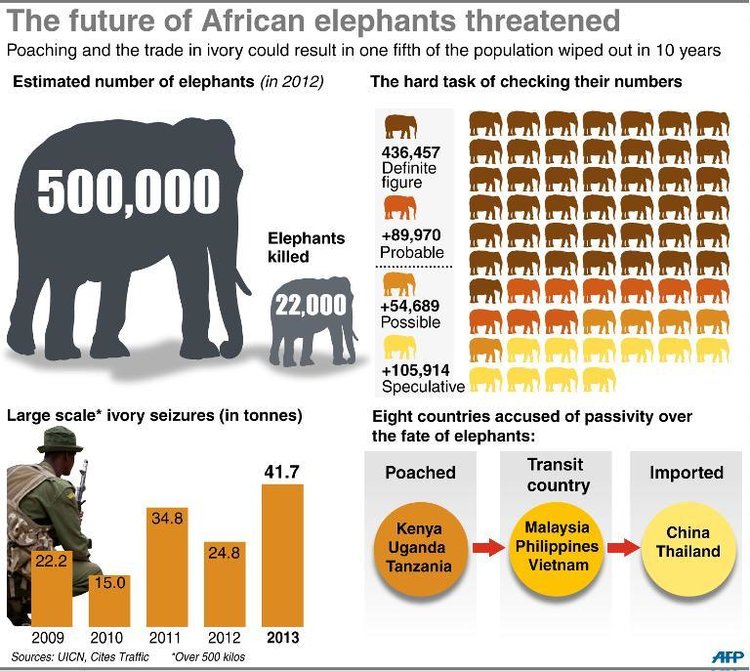
Status
The status of wild elephants in Nepal is far from satisfactory. The National Park and Wildlife Conservation Act 1973 accorded them a protected status. Categorized as an endangered species by IUCN, the World Conservation Union under CITES lists them in Appendix I.
As with the entire Indian sub-continent, and continental Southeast Asia, the reasons behind the dramatic decline of Asiatic elephants in Nepal, too, are much the same. The human-elephant conflict has taken a nasty turn.
If the elephant raids end up in the destruction of property, loss of livelihood and even human lives, elephants, in human retaliation, fall prey to poisoning, electrocuting and shooting. Worst hit is the villages and buffer zones (the immediate areas inhabited by humans surrounding the national parks and reserves).

Habitat loss, depletion of forestland for human settlement, agriculture and development work, hunting for ivory, illicit logging, excessive collection of fodder and firewood, and to some extent, capturing for domestication are the many causes.
In Africa, the modus operandi of slaughtering elephants in the wild reached an all-time high when cyanide was used. In 2013, “poachers killed 300 elephants in Zimbabwe’s Hwange National Park by poisoning their water supply and salt licks.”
Deforestation
Nepal’s massive deforestation was brought about by the Malaria Eradication Program in the 1950s, which also triggered a mass exodus of hill people to the fertile plains. This was followed by the Terai resettlement scheme in the 1960s, implementation of the Land Reform Program in 1979, and the infrastructure development work like the Mechi to Mahakali, Mahendra East-West Highway. All brought in their wake massive destruction of forests—the haven for wild elephants.
From 1950 to 1980, Nepal has lost almost half of its forest cover. In the 1990s, the lush primary forests vanished at a rate of 200 hectares a day (1.7% annually in the Terai plains), precipitating grave ecological and climatic changes.
On the Run
It has taken 400 million years for the planet Earth that we live on today to evolve—an epic journey, a formidable challenge, tough, grueling and harrowing for both humans and the denizens of the wild. The biggest challenge for the animal kingdom, as always, has, however, been the hominoids—the ‘thinking ape’ as they are sometimes referred to.
If the evolutionary history of the early primates is to be dug up, the earliest known ancestors of modern-day elephants came 65 million years ago, long before the birth of Homo sapiens in the Paleolithic Stone Age, 2.5 million years ago. The humans came, and the ‘rape’ began; untold species and numbers of our pre-historic elephants, the rightful early settlers of this planet, were pushed to extinction.
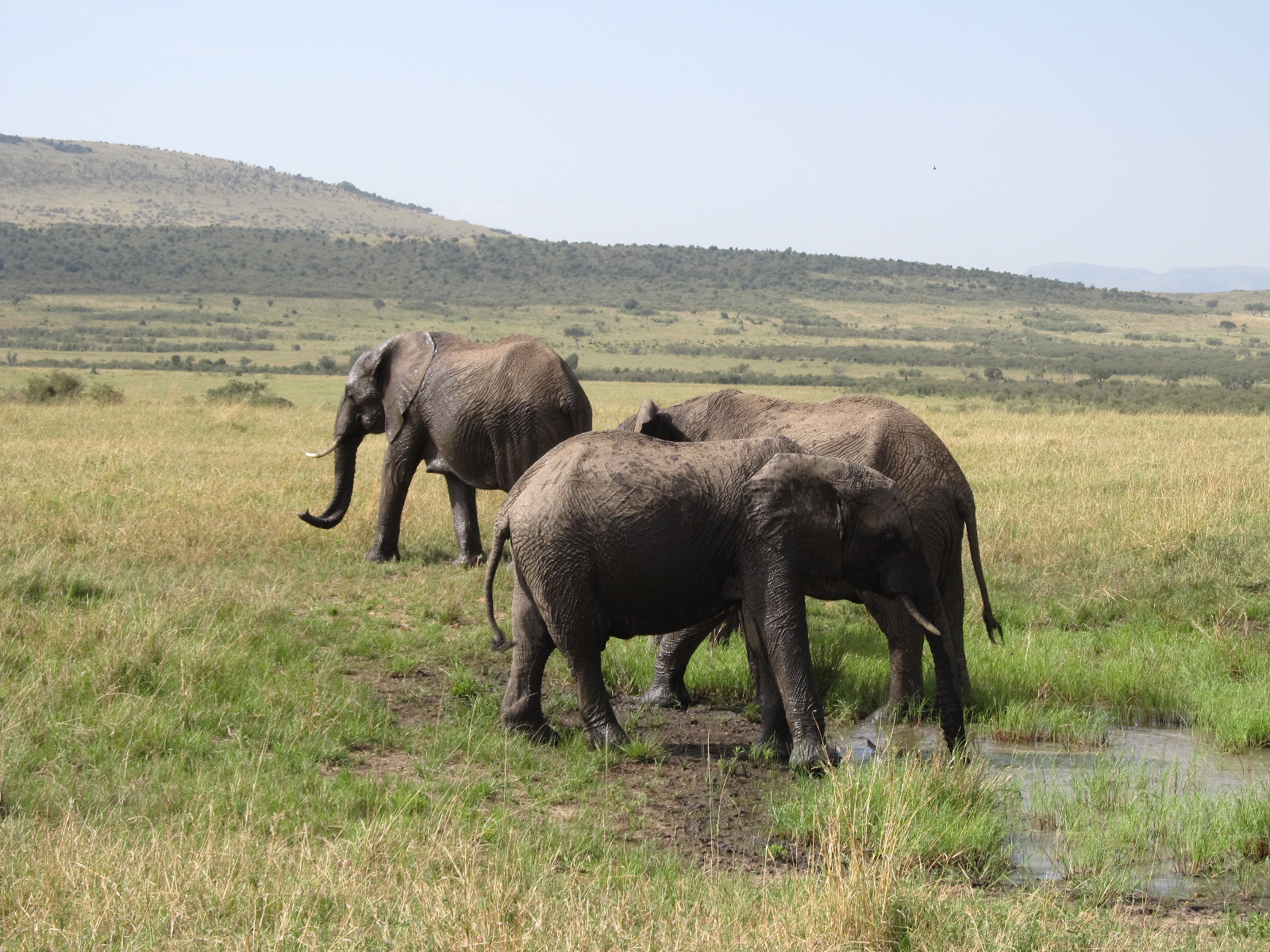
Enjoying no more than a ‘refugee’ status today, always on the run, the impending doom for the wild elephants still lurks somewhere near the surface. According to Dr. Dinesh Neupane, every year, two to three elephants succumb to retaliatory actions by local communities.
“We have always been very fond of elephants, but because of our deeds, this creature is disappearing. So far, all conservation and management plans are about confining them to protected areas. We have not been able to admit that we have encroached on their lands,” says Dinesh Bhuju, General Secretary at the Resources Himalaya Foundation.
Once just an innocent Denizen of the jungle, is, today, considered a liability. And it’s one of life’s little ironies that the so-called Homo sapiens—who were the cause of all the sufferings, worse, the extinction of one of the earth’s rarest inhabitants—are supposed to referee the remedies today!
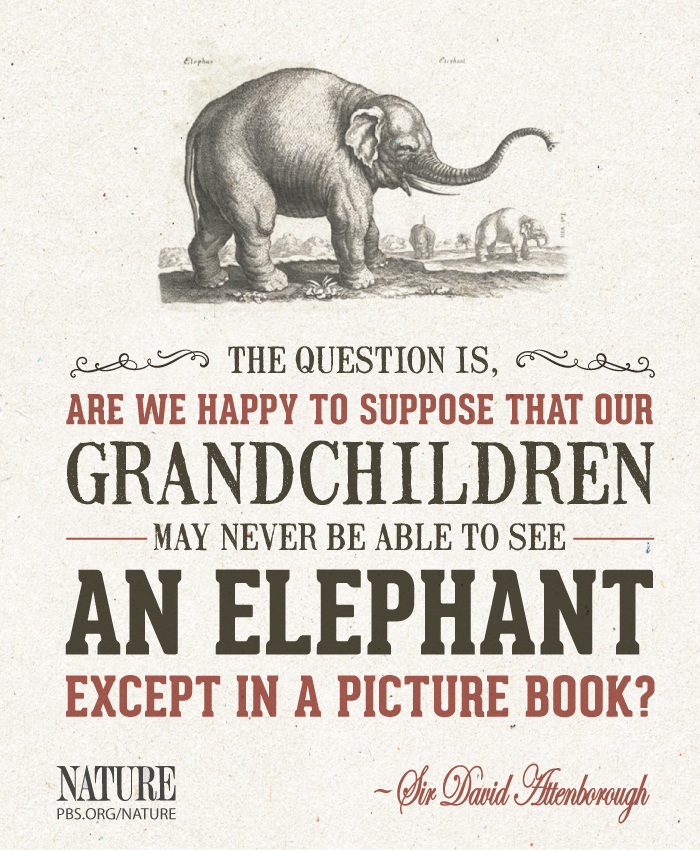
We had 350 known species of elephants—only two remain today—yet still—threatened. Are we to look away when the stark truth stares us in the face? Are we to take that the last vestiges of these pre-historic hairy mammoths, too, are fated to turn into lifeless stony fossils like their extinct ancestors?
References: The contents and data for this write-up have been drawn from the works of Dr. Narendra Babu Pradhan, Petra F. Ten Velde Thaguna, and Dr. Pralad Yonjan, bulletins of the Department of National Parks and Wildlife Conservation, and the Internet.




